Much of this content was covered in one of my movies in the weekly ‘Tips & Tricks’ course I create for Linkedin-Learning (formerly Lynda.com).
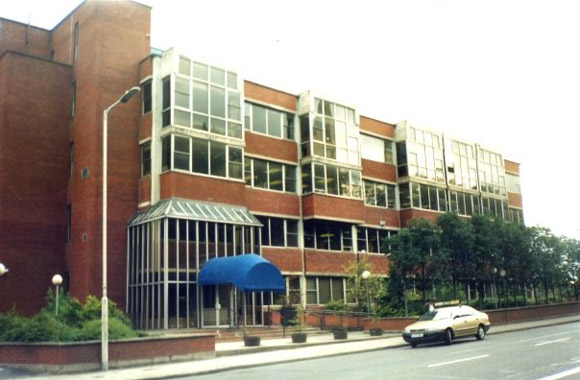
Back in the late 80s / early 90s when I was working at the Don Bluth studio in Dublin, one of the animators told me something curious. When you get into the animation department, you’ll spend your first few months – six or more – grinding out a pathetic 1 or 2 feet a week (a foot being a mere 16 frames, or 2/3rds of a second).
You’ll expect to be fired any day, he said – but one Monday you’ll come in and start working, and by Friday you’ll have done five feet a week. And that’ll be your new average. You’ll go from being a ~2 feet a week animator to a ~5 feet a week animator. Your improvement will be a series of plateaus with sudden and inexplicable jumps to a higher average.
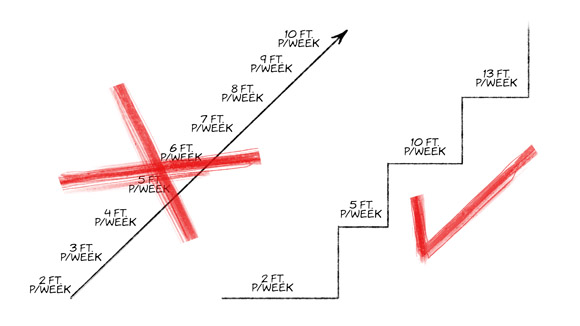
“This is the stupidest thing I’ve ever heard.” I thought. “Can’t be true.”
A few months later I was promoted into the animation department, and sure enough, spent a gruesome and terrifying six months eking out 2 feet a week – if I was lucky. One particularly horrible 3ft scene took me 6 weeks. I still don’t know why they didn’t chuck me in the Liffey. I guess they knew the pattern.
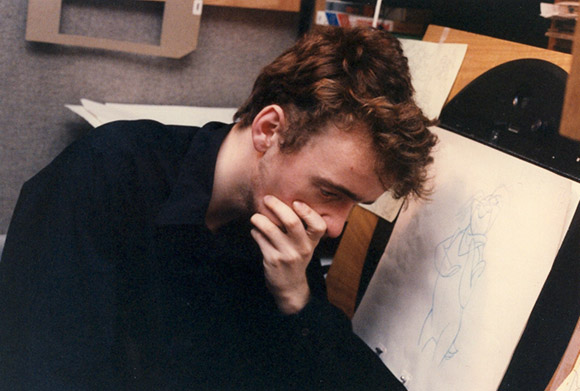
One Monday I was given a 10ft scene, and to my amazement handed it in on Friday. After that my usual average was 5 to 6 feet a week, more than enough to regard myself as safe, and to work toward a weekly average of 10ft a week. The bizarre anecdote was true, for me at least. My footage average had almost tripled – and the new ability seems to have clicked into place over a single weekend.
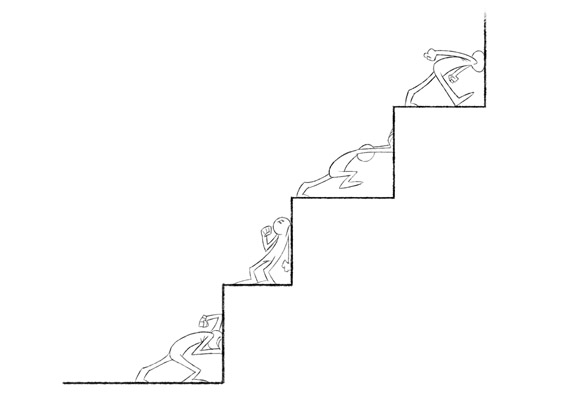
Over the years this has repeated for me a few times. At Bluth we could quantify improvement in terms of raw footage, which was posted (shudder) on the wall for all to see. But in later years, when working for different studios, I noticed not just increases in speed/quantity, but also in quality. Strange to find yourself drawing poses that only a year earlier would have been a struggle, or unimaginable. I can only guess it’s similar to riding a bike – one moment you can’t do it and you’re wobbling down the street, the next something in your head ‘clicks’, and you’re riding it. The scientist Michael Polanyi called this ‘tacit knowledge’ – something that you must learn by doing, something that just cannot completely be put in words. You can tell someone the theory or rules of thumb behind a skill, but you must learn by doing.
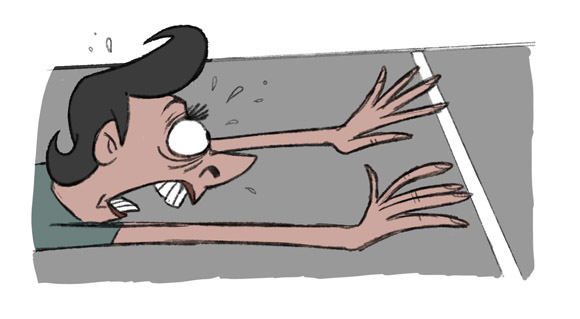
Also, to ‘level up’, you must (in my experience) usually take on a task just out of reach, but which is realisable – not a Mt. Everest, but still a climb that will make you struggle. You must also do this over time – it’s not enough to dabble, to apply yourself sporadically – it demands hard work on a project just beyond your current skillset, applied over a consistent period of time on a fixed goal.
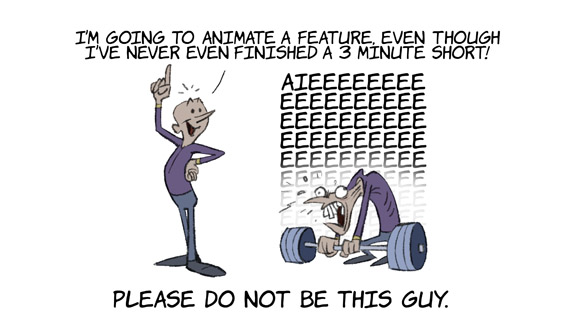
I’ve worked with people who had achievable ambitions, but completely unrealistic and self-destructive plans for achieving them. One friend set himself up for inevitable failure by planning on “animating his own feature, by hand”. That was fifteen years ago, and the world still waits for his Magnum Opus. It will wait in vain.
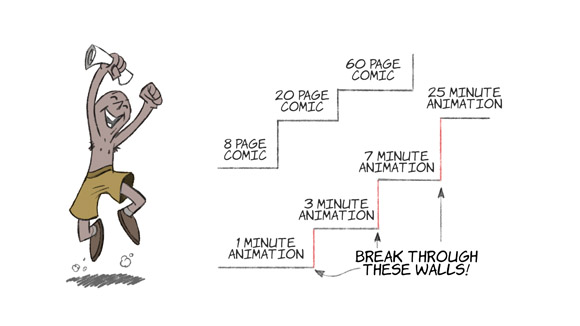
If you are serious about being a professional, be it a comic artist or an animator or a designer or what-have-you, you need to find the plateaus, and target them. So, if you want to create a graphic novel, excellent. First, try one page. Then, an 8-page chapter. Managed that? Then a 20 page story, and so on. Similarly with animation, if you want to animate a longer project you’ll test yourself to exhaustion on a one minute short, never mind a 25 minute film. Prove that you can handle at least some of the intermediate plateaus before tacking a monster. Don’t be vainglorious.
It still amazes me to improve dramatically much later in life – to suddenly realise in my late 40s or early 50s that my work now is far superior to that done in my 20s or 30s. It’s often like looking at someone else’s work.
Finally, there’s a weird magic about finishing a project. In my experience, the last 1% is harder than the first 50%, maybe it’s just exhaustion. You will hate it. But you must finish it. I have several projects which I despised by the end, but in the process of making them you learn so much more than if you’d never tried. It’s too easy to jeer at other artists’ projects when they fail creatively, but they finished them. Which is more than can be said for the person who never even tries.
To summarise (and I stress this is the formula that has worked for me over decades, your mileage may vary, but if you’re in a rut, why not) –
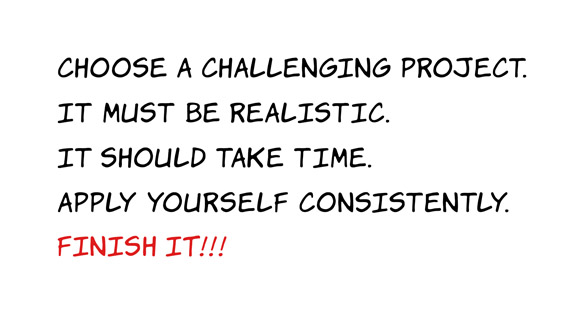
*
Hope you found this useful.
The link below will give you a free 30 day trial Linkedin, where you can follow my courses.
LinkedIn Learning: Start your 30 day free trial

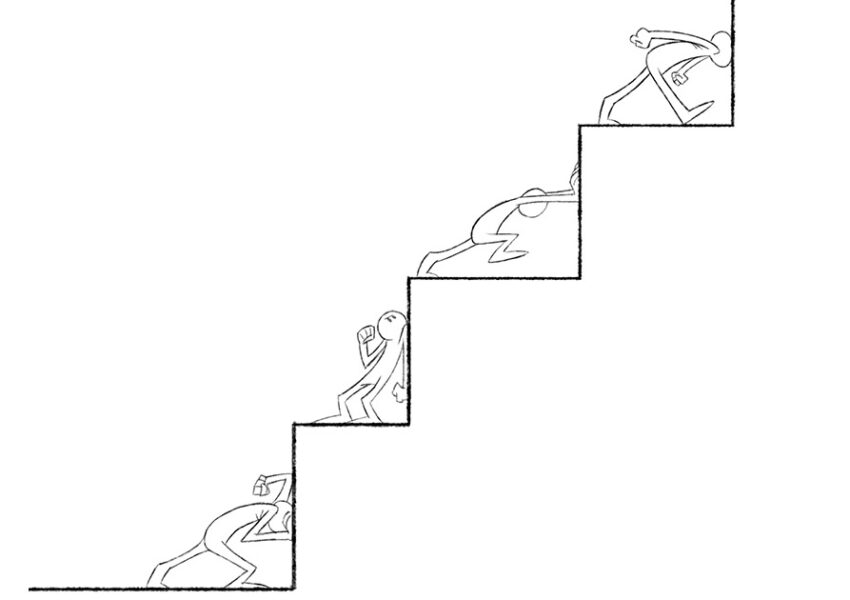
Thanks for this. I struggle with it a lot and it’s easy to feel like I’m not making progress…Even though I’ve been animating professionally for a decade! I feel stuck often but maybe those are the plateaus happening. Your tutorials helped me learn harmony and I’m grateful! Excited about dipping into more of your tutorials as little refreshers along side williams and goldberg and just honing my skills and maybe jumping up a notch. Really appreciate all your work here, thank you!
Glad it’s helpful. I well know the frustration of the plateau – but what’s amazed me over the years (I’m almost 51) is that my work still gets better. You’ll really notice this if you start a project that’s spread over a few years. When you look back at the early stuff, it can be a big shock sometimes! I’ll usually have to retouch or redo, because my style has either changed or improved in the interim.